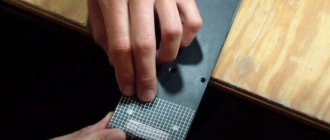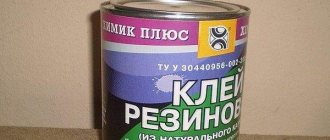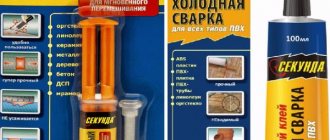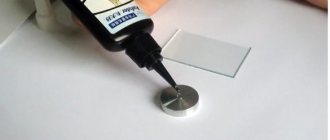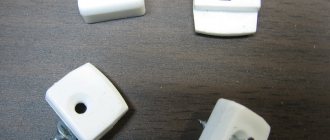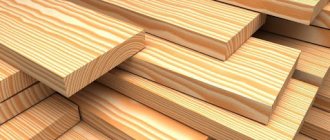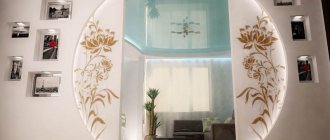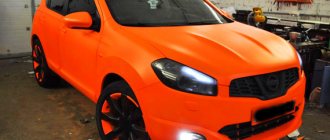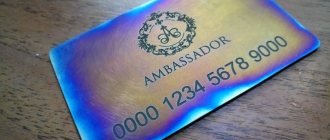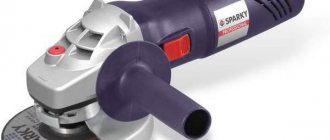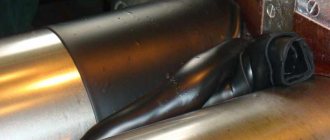There are universal adhesives that grip wood, plastic and fabric equally well. There can be many reasons for gluing plastic: for example, you need to glue a car bumper or hang a hook in the bathroom. Many people prefer the proven glue (and you’ve probably heard of it too) - “Moment”, but, as practice shows, advertised products do not always cope with their tasks. “Moment” may be good at gluing various materials, but it leaves evaporation in the space and sticks fingers together, so it’s inconvenient to work with. Comfortable work is one of the main and main conditions, because if you are uncomfortable working, how will the materials stick together? Crooked and uneven.
Let's see what plastic glue manufacturers recommend to us, and what customers think about it. Consumer reviews will help you make your choice.
Rexant Dichloroethane
Volume : 30 ml.
Price : 87 rub.
If you need to glue the temples of glasses or glue other small plastic parts, Rexant Dichloroethane . This glue is so highly diluted that the smell of dichloroethane is practically absent. One of the buyers shared that he used glue for gluing PLA - it did the job perfectly.
The glue dries quickly and grips the plastic well; in addition, while it hardens, you can adjust the parts. Rexant Dichloroethane connection is reliable (which is exactly what we need), the main thing is not to rush to use the glued parts - let the glue dry completely.
For reference: the glue looks like water, but don't be afraid - it glues perfectly!
How to remove super glue from car plastic
Sometimes, due to carelessness, drops of adhesive fall on the plastic elements of the car. You can easily remove them if you know the basis of the glue and their components.
| Name of glue | The basis | Deletes |
| BF | alcohol | alcohol, alcohol-containing window cleaning liquid |
| Second, Cosmofen, Superglue | cyanoacrylate | anti-glue, soap solution, acetone, dimexide - for stains of different ages |
| Moment | rubber resins | acetone, dimexide |
| PVA | water-soluble | fresh stain - water; dried - scrape or remove the film of glue |
| Titanium | styrene-acrylic dispersion | dimexide, gasoline, concentrated acid for plumbing |
For effective removal, you should follow these rules:
- When removing with a strong solvent - acetone, check on an inconspicuous area of the plastic part for its aggressive effect on the surface. Acetone dissolves varnished surfaces and cellulose-based plastics.
- Dioxide is a universal remedy for all types of glue. Avoid prolonged exposure to plastic items.
- Anti-glue – select a special adhesive remover that matches the brand of adhesive. Manufacturers often offer glue and anti-glue in one set. When working with it, the room should be well ventilated.
- Water removes stationery, PVA and wood glue.
- Gasoline - dissolves rubber-based compounds.
Do not scrape the stain with a knife or sandpaper - you may damage the surface of the plastic.
If glue gets on your hands, you can easily wipe it off, as - read in our article “More than 10 simple ways to remove Moment glue from your hands.”
Tetrahydrofuran
Volume : 500 ml.
Price : 1,900 rub.
Liquid glue in an attractive jar and with an equally attractive orange label Tetrahydrofuran (THF) is used as a solvent, for example, for polyvinyl chloride. In laboratory practice, it is used in the production of organomagnesium compounds and for gluing plastic surfaces.
The glue is a colorless, flammable liquid with the odor of acetone. Most often in everyday life it is used for gluing car lights and inflatable boats. Whatever task the Russian THF glue faces, it will cope with it perfectly!
How to remove glue from a car body
The difficulty of removal lies in the damage to the paint surface of the body from exposure to the solvent. You can try to soften the stain with water or soapy water, but this is an ineffective method.
Experts advise removing glue from the car body using the pharmaceutical product “Dioxide”. The product is not toxic, but it is recommended to work in a well-ventilated area. The process is long and painstaking. Dip a cotton swab into the product and wet the top layer. After 2-3 minutes it will get wet, remove the top layer with another stick.
Remove layer by layer - you will get rid of the hated stain.
Read our article on how to remove tinting adhesive from car glass:.
UHU Creative 47285
Volume : 15 ml.
Price : 415 rub.
2-component epoxy adhesive bonds many hard materials such as ceramics, glass, stone, and also plastic. UHU Creativ 47285 adhesive stands out from its peers because it copes well with elements that have uneven surfaces.
Ideal and simply irreplaceable in jewelry work, in those where it is necessary to glue irregularities. In order for the adhesive joint to be stable, thorough mixing is necessary. You need to mix both components (included in the package) in equal parts. On average, glue preparation takes 5 minutes. According to customer reviews, the glue is excellent - it sets quickly and leaves no marks.
How to glue rubber and plastic: instructions
Having finally decided which glue to use to glue the rubber to the plastic, we get to work. The process goes like this:
- Sand the smooth surface of the plastic with sandpaper until it becomes rough. This is necessary for the best adhesion.
- Degrease the gluing area using acetone, alcohol, gasoline, and then apply a layer of glue to it. According to the instructions, the composition can be applied to one or both fragments at once.
- Next, connect the fragments and compress with force. They must be kept in this state for the period of time specified in the instructions.
When the polymerization process comes to an end, the adhesive joint reaches maximum strength.
When gluing, apply a thin layer of glue.
3M Hi-Strength 90
Volume : 500 ml.
Price : 1,730 rub.
You won't regret your money's worth by purchasing 3M Hi-Strength 90 . This transparent and super strong glue is a real magician! It is ideal in situations where fast drying and reliable bond strength are valued. If you are faced with the task of gluing plastic, wood, MDF and other materials, then use 3M Hi-Strength 90 .
Millions of repairmen from all over the world use this glue. They love it for the reliability of the adhesive seam, excellent coverage, long-term storage (the container does not allow the product to dry out, maintaining the properties of the composition for 12 months).
FYI: The aerosol adhesive allows for quick and easy application without a brush. One click on the sprayer is enough.
What should high-strength adhesive for rubber and plastic consist of?
To achieve a strong connection between different surfaces, it is worth giving preference to an adhesive composition suitable for both materials. In our case, it should be rubber-plastic glue. Among the products suitable for gluing plastic and rubber, the following varieties can be distinguished:
- Polyurethane. Their base is polyurethane rubber combined with various types of additives. Such compositions are universal, characterized by good adhesion to rubber, plastic and other materials.
- Polychloroprene. The main active ingredient of such adhesives is neoprene or polychloropropene rubber. They combine rubber with metals, various plastics, stone surfaces, parquet, and glass.
- Rubber. They come in various compositions, the basis of which is dissolved natural or synthetic rubber. A composition of this type is considered the best adhesive for rubber due to the similarity of their components.
- Cyanoacrylate adhesives, also called “superglue”. Consists of organic matter with a high polymerization rate. This glue hardens well in just a couple of minutes, providing reliable adhesion to surfaces. The fastest hardening occurs with increasing humidity, since polymerization occurs under the influence of moisture from the air.
Reliable adhesive for rubber and plastic can have different compositions. The main thing is that it has good adhesion to both materials.
Cold welding Mastix MS 0115
Volume : 55 g.
Price : 67 rub.
Heat-resistant adhesive Cold welding Mastix MS 0115 is widely used in repair work. Many masters prefer it due to a number of advantages:
- for reliable fastening of parts;
- for quick drying;
- for flexibility to temperature conditions.
This adhesive is suitable for joints made of heat-resistant materials including plastics, ceramics and non-ferrous metals. Working with the composition is allowed under critical temperature conditions: from -60 to +250 degrees. As buyers say, Mastix MS 0115 is an irreplaceable thing for a motorist. Foreign heat-resistant analogues cost several times more, but they are glued in the same way.
UHU Plast Special
Volume : 30 g.
Price : 398 rub.
An adhesive intended for plastics with a needle tip shows itself incomparably when the task arises of gluing polystyrene and hard plastics such as ABS, SAN, SB, ASA, as well as PVC. Used for gluing any materials.
UHU Plast Spezial adhesive is resistant to oils, alcohol, and ordinary water. Able to withstand temperatures of -30 C and up to +90 C. Ideal when you need to work with small details and model something.
Note! When connecting thin-walled plastic elements, a thin layer of glue is sufficient.
Bonding method
The choice of gluing method depends on the type of glue and materials used. Before use, the surface is cleaned of dust and dirt, sanded and degreased.
Hot way
With the hot method, an even layer of glue is applied to the prepared surfaces, after which they dry for an hour (for BF-2, 10 minutes is enough). Then a second layer of adhesive is applied and the parts are connected.
After this, the compound must be placed in an oven at + 150-170°C for 40 minutes (for BF-4) or for 1 hour at +130-140°C (for BF-2). The last stage is natural cooling to room temperature.
You can use the connected parts no earlier than 5 hours after the operation.
Cold way
Everything is much simpler here. The adhesive composition is applied to the surface of one part. After 3-5 minutes of drying, apply a second layer of glue and connect the parts, pressing them together as tightly as possible. You can use the result of your work no earlier than in a day.
TECHNOCHEM KDK11
Volume : 500 ml.
Price : 2,450 rub.
Don’t be surprised at such a high price for glue - there is a justification for this. The adhesive, the composition of which was developed specifically for plastic, is used for gluing plastic surfaces, and also as a solvent (for compositions of nail polish removers, paints, etc.)
TECHNOCHEM KDK11 glue is a colorless liquid that is highly flammable. The smell is similar to chloroform. Practically insoluble in water. The glue is sold in a bottle, which is convenient to store, carefully closing the cap after use.
3M Automix 55045
Volume : 50 ml.
Price : RUR 2,813
3M Automix 55045 is a two-component, quick-drying adhesive designed for durable repairs of plastic auto parts. Used with 3M 04903 Molding Film to restore damaged plastic parts in your vehicle.
In addition to auto glue, they are also used:
- for fastening elements;
- for interior decoration elements;
- for plastic linings, etc.
The consistency of the glue is thick and dries instantly (it takes 20-30 seconds). Suitable for most types of plastic, in addition, it perfectly glues wood, metal and glass.
Moment Plastic
Volume : 30 ml.
Price : 120 rub.
The familiar Moment glue represents a separate type in its arsenal - for plastic. Moment Plastic is an ideal product for joining plastic surfaces and is frost-resistant. Thanks to its transparency, it is invisible in seams.
In general, reviews of this product are positive. Glue can be purchased at almost all construction stores. It's easy to use, but it can be a problem with your fingers - you'll have glue in them as you work, but if you wash your hands under running hot water, it will come off. To ensure that the glue does not disappoint, follow the instructions on the back of the tube.
Other types of glue
All adhesive mixtures can be divided into organic and inorganic. The BF series belongs to the latter. Organic glue is made from components of plant and animal origin: starch, resin, wax. Inorganic mixtures contain chemical elements and compounds: silicon, magnesium, formaldehyde, ethylene.
Adhesive is most actively used in the field of construction and repair work. It is used for fixing floor coverings, fastening drywall, heating and waterproofing equipment.
Tree
To fix parquet, as well as other woodworking derivatives, use:
- PVA glue;
- polyurethane glue;
- resin based product.
PVA glue is considered environmentally friendly and can be used even in rooms without exhaust ventilation. It is distinguished by:
- fast setting;
- high strength (able to withstand high static loads);
- long service life;
- versatility.
This type is often used for minor household repairs. You can increase the strength of the composition by adding wood dust to the mixture.
Polyurethane glue is a little more expensive, but it can withstand not only statistical, but also dynamic loads. It is also versatile, waterproof, heat resistant and UV resistant. Its use is advisable in extreme conditions.
Resin-based adhesives are in demand in furniture production. The main advantage of the composition is its resistance to chemically aggressive agents, so its use requires the use of protective equipment (gloves).
Clinker and gypsum tiles
For cladding with decorative gypsum tiles, a gypsum mixture is used. It has many advantages, among which it is worth highlighting:
- ease of preparation of the solution;
- increased strength;
- economical consumption;
- long service life.
If necessary, you can also use polyurethane foam, but since it expands when hardening, the parts should be additionally secured with dowels.
Drywall
When fixing drywall, 2 types of glue are most often used. The first type is aerosol. It is applied over the entire area of the slab every 25-30 cm, after which it is fixed in the desired position. The advantage of the aerosol composition is its rapid setting. Disadvantage: intolerance to temperature changes.
Classic mounting adhesive is cheaper. It is produced in dry form, so it requires dilution with water. Using plasterboard slabs you can level walls, door and window openings, as well as ceilings. Self-tapping screws will provide more reliable fixation of gypsum fiber boards.
Plastic
Plastic is widely used today in almost all industries. Products made from it are somewhat fragile, but can be easily repaired using the following types of glue:
- PVA;
- contact glue (Moment and BF-2);
- reaction glue (Second);
- hot melt adhesive.
If everything is clear with the first two types, then the reaction adhesive is made on the basis of epoxy resin. This type of glue has good water resistance. There are one-component and two-component varieties. The first ones dry quickly, the second ones are more durable.
Hot-melt adhesive is applied using a special device - a glue gun. It works great on plastic surfaces, as well as wood, metal and textiles.
Wallpaper
Despite the wide range of interior design possibilities, wallpaper is still the most popular means of wall decoration. When working with them, universal glue is most often used. Depending on the type of wallpaper (paper, vinyl, textile), the instructions for diluting it change. Light materials require a liquid composition; for dense wallpaper you will need to prepare a thicker mixture.
Iron
In situations where the integrity of metal parts cannot be damaged, a special type of glue is used - epoxy. It is sold complete with a hardener and, to increase the strength of the seam, requires thickening - adding metal shavings or silicate chips to the composition.
Another option is “cold welding”. It consists of a base and a catalyst, which, upon reacting with each other, harden. You can lock the threads on the metal and seal the flanges using machine glue or an anaerobic adhesive. In the absence of oxygen, the acrylic base of the adhesive polymerizes and sets tightly.
Rubber and PVC
Rubber parts and things, such as boots or a bicycle tire, can be repaired with a special adhesive compound - rubber glue. It is created on the basis of polychloroprene rubber, organic solvent and synthetic resins.
This variety is highly adhesive. With its help you can repair a tent, a PVC boat, shoes or children's toys. For the latter, it is better to choose brands based on natural rubber.
A second of adhesive gel will help you quickly repair a small tear. He will help out with a punctured tire and other minor troubles. However, it must be remembered that it has extremely low water resistance.
Glass
Glass is present not only in window structures. Decorative items, dishes, jewelry, lighting fixtures and furniture elements - you can find this beautiful but fragile material almost everywhere.
You can glue a broken vase using one-component varieties made on the basis of organic silicon. Unlike BF or Moment, this glue is more aesthetically pleasing and invisible on the surface of parts.
Polymer glue is actively used in restoration work, repairing jewelry, making stained glass and even expensive jewelry. It requires the use of UV radiation, so the polymer variety is rarely used in everyday life.
Silicone glue is environmentally friendly and non-toxic, so it can be used to repair dishes and other items that come into contact with food or drinking water. Silicone glue perfectly repairs not only glass, but also ceramics.
The main thing when selecting glue is to correlate its properties with the goals and tasks that it must accomplish. This is the key to an excellent result.
